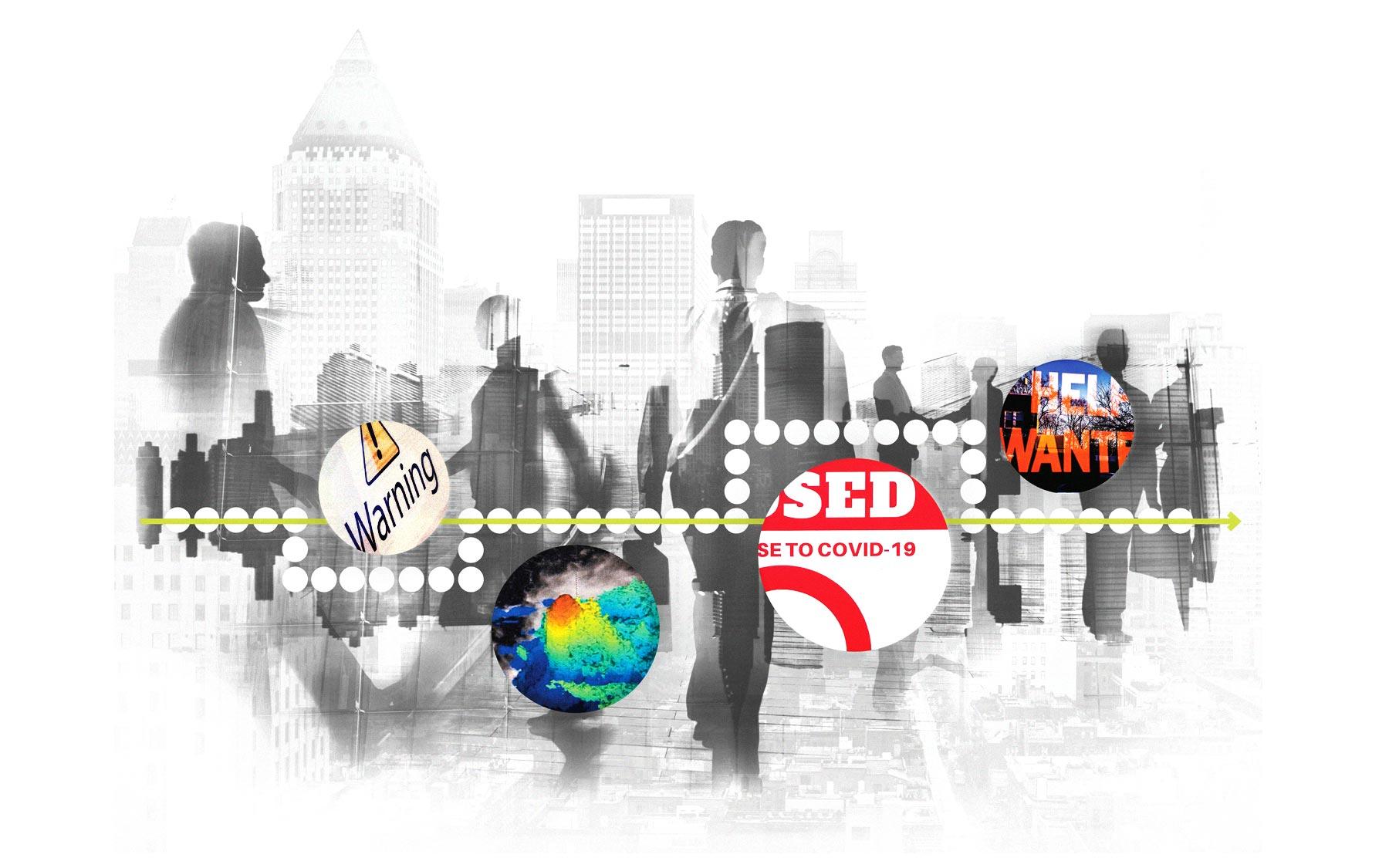By Eric Malterre, chief client officer, international, and James Norman, international business development director
From geopolitics to climate change to fears of another pandemic outbreak, instability seems prevalent everywhere.
Current business risks abound, including cybersecurity, rising inflation, supply chain issues and the Great Resignation, which continues to have a ripple effect on the global workforce. While it may feel as if managing marketplace unpredictability has never been more challenging, this convergence of disruption provides an opportunity to step back and take a wider view of your organization’s approach to claims management — with an eye toward reimagining processes that may not be working effectively.
Collaborative partnerships
Historically, claims management contracts have been price-driven, with strict service level agreements and key performance indicators (KPIs). Now, there is more focus on developing holistic, partnership-based relationships, where service providers listen and work with clients to identify pain points and redesign processes — with the ultimate goal of improving the customer experience and driving efficiencies. This collaborative approach, combined with the availability of intelligent technology, is changing the way risk managers look at large and complex claims management programs; there is a strong emphasis today on leveraging the best in people, data and insights.
If there’s one thing we’ve learned from COVID-19 and the uncertainty of the past two years, it’s the importance of risk awareness and readiness. Proactive interaction and collaboration with brokers and service providers are critical to accurately understanding your exposures and facilitating change innovation. As you consider your organization, ask yourself: Are we prepared to deal with the next big catastrophic event, and are we satisfied with the level of data and insurance cover? If the worst happens, do we know who to turn to help us manage the situation? Do we have strong service partner relationships? Are we getting good service?
Every organization wants a program structure they can be confident in — one that supports their customers and employees in a crisis while protecting their reputational risk and brand.
Cultural alignment
In handling customer claims on behalf of insurers, service providers play an important role in retaining and growing their clients’ businesses. They have to align themselves with, and become an extension of, their client’s operations by embedding themselves in the organization; it’s the best way to understand and appreciate their claims philosophy.
Unsurprisingly, clients want to work with partners with similar core values and brand reputations. Many are looking for service providers with a robust environmental, social and governance (ESG) strategy; a cohesive, value-driven culture; and a learning and development program that promotes next-generation talent.
Catastrophe response
Climate change significantly contributes to the volatility and unpredictability in today’s world. Bigger and more frequent typhoons, hurricanes and wildfires mean a transactional response is no longer enough. Prompt human intervention and boots on the ground are critical when a catastrophe occurs. Technical expertise remains paramount, but in an event of any size, your customers and employees have to trust in your ability and genuine desire to make things right.
The new generation of loss adjusters must have training in people-centric communication skills and delivering service with empathy during a crisis. This is all part of a holistic, strategic approach to claims management.
Technology-enabled solutions
If the much-needed human element represents one side of the claims management coin, the other side is all about technology. In order to provide an excellent customer experience and effectively manage large and complex claims programs, it’s no longer enough to have a team of skilled technicians who are good at their craft. Data analytics, data science, machine learning and artificial intelligence are essential tools that add value, insight and reassurance. In this regard, technology-enabled claims management providers are quite different from service providers that simply use technology to process claims.
At Sedgwick, we process huge volumes of claims data every year and are able to watch claims trends in real time through smart use of data analytics. This allows us to help our clients better mitigate risk and manage their claims more effectively; it also highlights why long-term partnerships really work. By investing talent and technology into the relationship, we can measurably reduce clients’ risk exposure and future claims costs.
Thinking globally
While you may have great success developing long-term relationships with a client in one country, extending that to operations in other parts of the world isn’t always straightforward. Global organizations rely on local teams and the ability to scale up when needed — and all within a compliant framework. The ability to look across the entire claims portfolio can offer you the insights needed to identify and better predict where the risks really are. It can also reveal the kinds of issues to which your business may be exposed. Armed with this information, you really can reimagine your claims management program globally by looking at proactive measures and using data as an enabler to enrich insights and effectiveness.
Time for change
Market uncertainty offers an opportunity to reconsider existing patterns and programs so you can ensure preparedness for whatever the future may bring. Now more than ever, organizations need reliable claims management partners with global reach, local knowledge, technical skills, scalability, balance sheet strength and connectivity. The best way to manage unpredictability is to develop and invest in long-term partnerships today. While some may be reluctant to make significant changes amid uncertainty in the market, instability creates the perfect opportunity to look at things differently and move with the times: take control, press the reset button, and accelerate the process.
> Learn more — check out an expanded version of this article in Sedgwick’s digital magazine edge, issue 18

